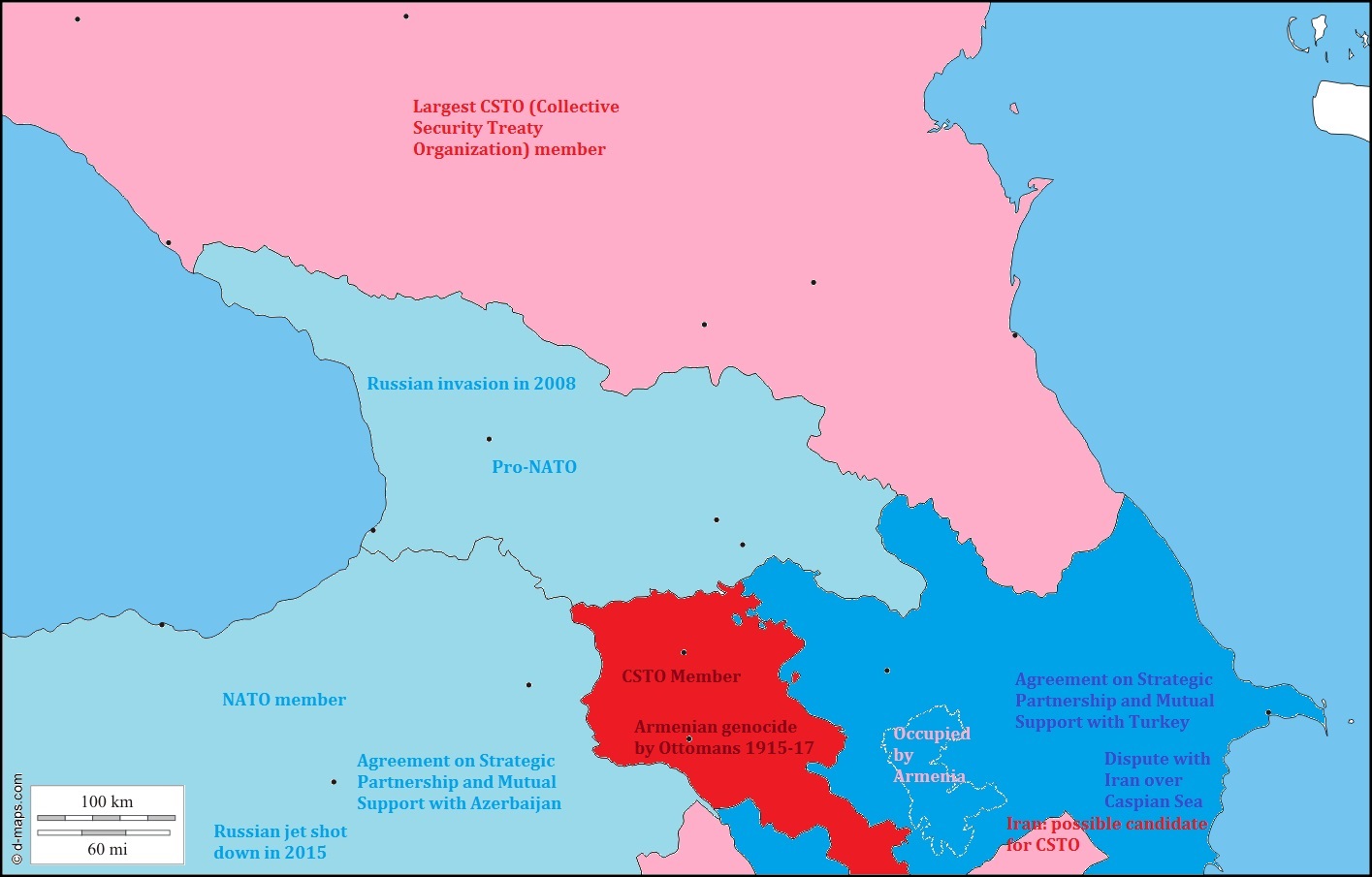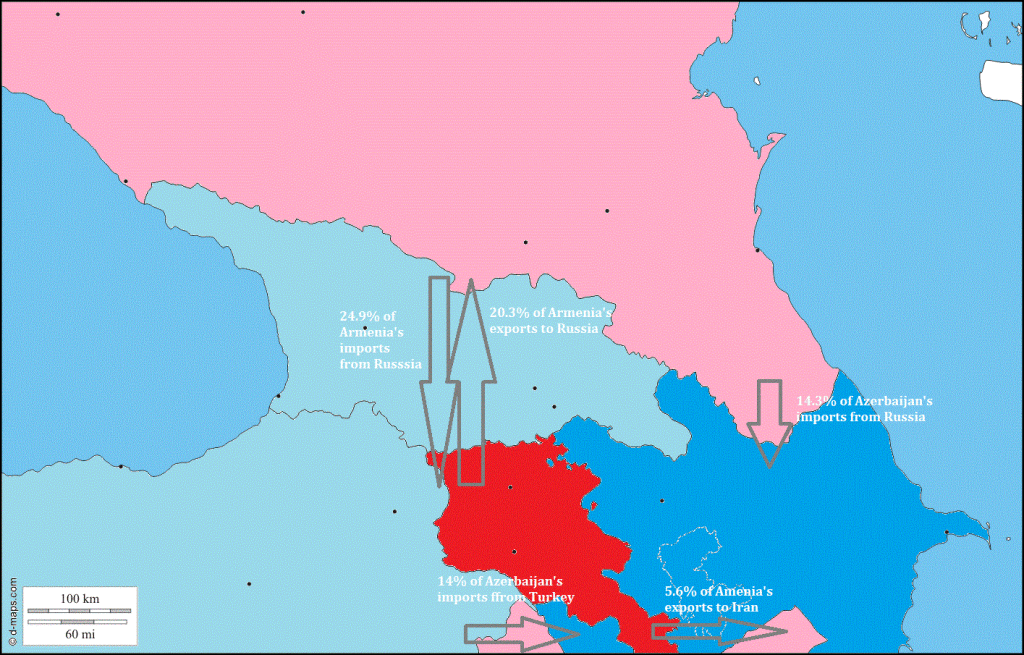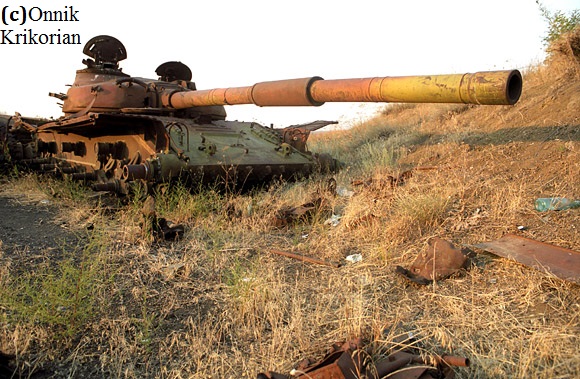The Nagorno-Karakh conflict has been going on since 1988, when Armenia invaded Nagorno-Karabakh, a part of Azerbaijan in which a majority of the population is Armenian. The war for Nagorno-Karabakh continued until 1994, and up to 38,000 people lost their lives. The clashes, however, have never stopped, and since then end of the war more than 3,320 further people have died. The tensions escalated at the beginning of April 2016 again, when fighting erupted between Azerbaijan and Armenia, leaving at least 50 people dead. A ceasefire was then imposed.
The conflict may seem insignificant to the wider world, however if one takes a look at the political ties of the countries, it is clear that a conflict in Nagorno-Karabakh can have much greater impacts than just for the region.

Even though both Azerbaijan and Armenia buy weapons from Russia, it is clear that, while Armenia is a country closely related to Russia, Azerbaijan is oriented more towards the west.
The most significant military alliance of Azerbaijan is that with Turkey, called the “Agreement on Strategic Partnership and Mutual Support”. But not only militarily, but also economically Azerbaijan is closely tied to Turkey, with 14% of all goods coming into the country from there.
Relations between Azerbaijan and Russia may not necessarily be all to good, but definitely aren’t too bad either, with the largest percentage of imports into Azerbaijan (14.3%) coming from Russia – despite it backing Armenia.
Turkey is a NATO member, and the furthest east of all the countries of the North Atlantic Treaty Organization. Throughout history, the relations between Turkey and Russia have never been especially good, and they were significantly strained when a Russian jet was shot down by Turkey in it’s border region with Syria (which, in turn, is backed by Russia).
Georgia is not a NATO member, however is highly in favor of the NATO, and itself is looking towards the West for help, especially following the Russian invasion in 2008.
Armenia, on the other hand, is a member of the CSTO (Collective Security Treaty Organization), of which the largest member is Russia. It can be simplified as a “small Warsaw pact”, and a number of former Soviet states are now members (including Kazakhstan). Relations between Turkey and Armenia are not necessarily – Turkey has, just like Azerbaijan, closed it’s border to Armenia. Historical disputes, especially that of the genocide in Armenia by the Ottoman empire 1915-17, with 1,500,000 deaths, cast a shadow over the joint history of the countries.
Armenia’s close ties to Russia can also be seen by looking at the foreign trade – 20.3% of Armenia’s exports go to Russia, and a whopping 24.9% of all imports come from the country of the bear.
The CSTO, which can also be seen as the modern counter-organization to the NATO, is possibly going to gain a new member within the next years: Iran. Relations between Russia and Iran have also been in the news in recent times, with Russia selling air-defense rocket systems to Iran. Iran has also worked on increasing the effectiveness of it’s armed forces, especially of the navy – a concerning move for Azerbaijan, because there are disputes between the two countries in the Caspian sea. Further, Iran has working economic and political ties to Armenia as well, and 5.6% of Armenia’s exports go the Islamic Republic.
So even though the conflict might seem like a regional problem for most outsiders, a look at the military and economic alliances of the region shows that it is quite a bit more significant, and both sides – NATO and Russia/CSTO fear the possibility of a proxy war in Nagorno-Karabakh – a significant factor to speed up the ceasefire on April 5th of this year.



